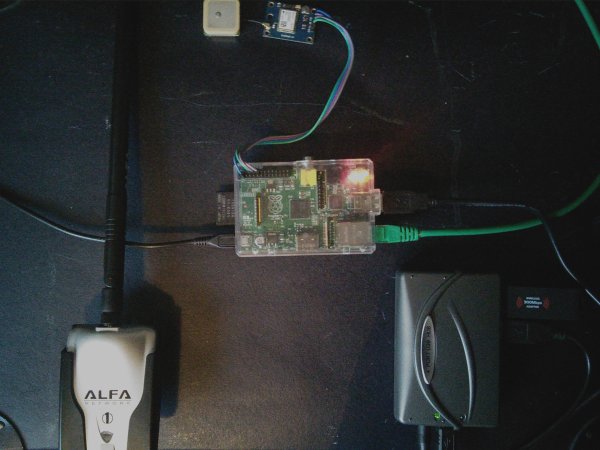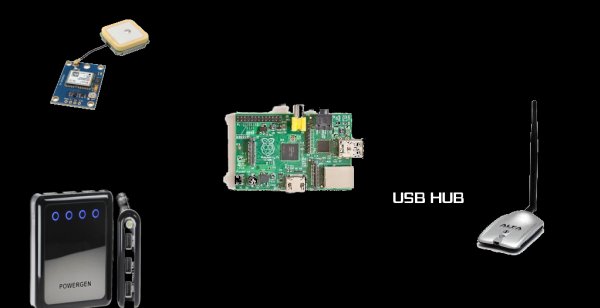As you can see – this system is used as a mobile wireless network (WLAN) detection point.
A small computer intended to be used for WLAN collection, including from UAVs. Hardware: IBM Power PC 405GPR processor, 64 MB SDRAM, 16 MB of built-inflash, 4 mini PCI slots, CompactFlash slot, and 802.11 B/G hardware. Running Linux 2.4 and the BLINDDATE software suite. Unit price (2008): $6K. (Wikipedia)
Another thing to note at the very bottom is the price: $6000 If you’re unsure as to why we might be interested in finding out the locations of wireless networks – Wikipedia explains the concept Here. It’s also a very useful way of profiling a companies exposure during a security assessment. Normally wardriving is conducted from a car (hence the driving). But the SPARROW system allows an aircraft or small UAV to map networks, giving a large amount of capability. It also allows discovery of networks in very sparsely populated areas like, say, deserts… So the obvious thing to do now is to try and build an open-source version of this piece of hardware. Let’s break down exactly what it is we want the system to do:
- Sniff WLANs
- Associate WLANs with a location
- Log the locations
- Operate autonomously (and independant of mains power)
Now our budget is considerably lower than that of the NSA… With that in mind, the following components are used to build the system:
- Alpha AWUS036H – Fairly standard USB Wifi adapter for WLAN detection (£20)
- Raspberry Pi Model B (512Mb RAM)- Cheap, small linux computer that will provide the ‘brains’ for the system (£30)
- 8Gb SD Card – Storage for the Raspberry pi (£5)
- Ublox GY-NEO6MV2 GPS Module – The easiest way to map a network to a set of co-ordinates. (£10)
- 12000mAh USB Battery – Provides power in order to keep the system running – (~£25)
- USB hub – Allows us to use multiple peripherals with the Raspberry pi, and solves power issues (~£10)
So in total, that brings us to a cost of around £100. Of course, that’s assuming you pay full price. Ebay (and similar sites), or an Academic discount can be used to obtain this equipment at much cheaper rates… So how does it all fit together?
For more detail: How to detect WiFi access points using Raspberry Pi



